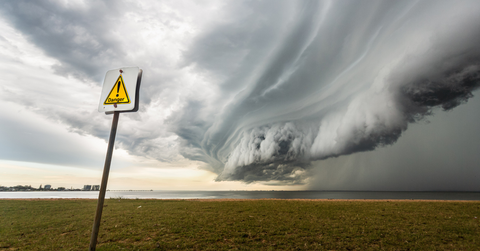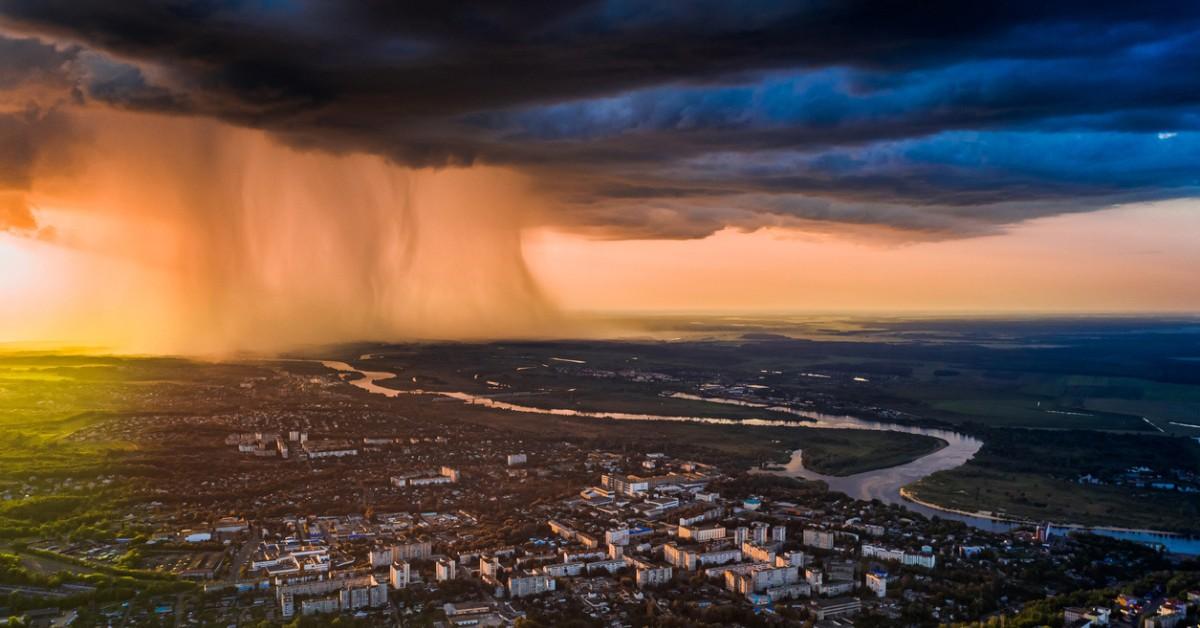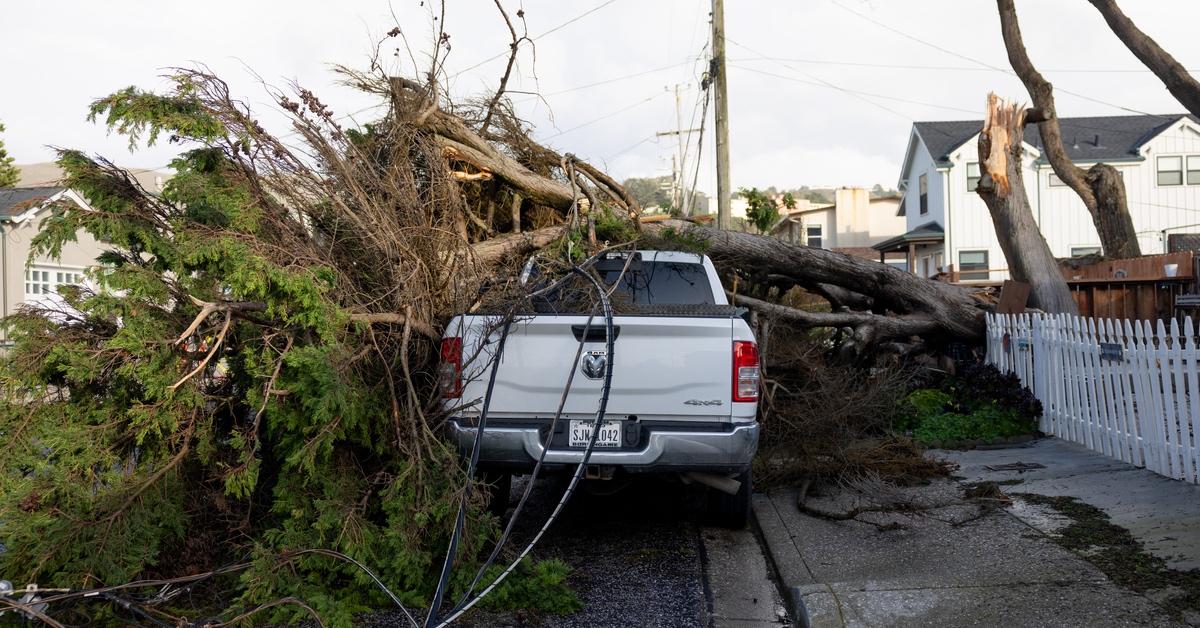Understanding the Difference Between Cyclones and Bomb Cyclones
Both can bring severe weather to a region.
Updated Nov. 21 2024, 11:50 a.m. ET

Nothing is quite as confusing as when meteorologists use terms that sound like they might be the same thing. Take bomb cyclones and cyclones, for example. While they both have the word "cyclone" in them, the two phrases couldn't describe more distinctly different weather patterns.
When it comes to a bomb cyclone vs a cyclone, the difference can get especially confusing, since both can bring damaging winds and torrential downpours when they move through a region.
I'll break down the two terms below, including what you need to know if you hear your local weather station throwingeither of these phrases around in the upcoming forecast.

Bomb cyclone vs. cyclone, what's the difference?
The difference concerns where they occur. Firstly, a bomb cyclone (AKA: bombogenesis) can happen in many regions, including over land. Cyclones are formed over tropical waters, according to the World Meteorological Organization. They are sometimes also called typhoons, hurricanes, or even tropical cyclones.
While both can (and frequently do) produce heavy rainfall and high winds, a cyclone produces significantly more damage.
The World Meteorological Organization says that these storms are one of the leading causes of damage when it comes to natural disasters, and only earthquakes are known to be more dangerous.
What happens in a bomb cyclone?
According to the National Oceanic and Atmospheric Administration (NOAA), bomb cyclones describe what happens when a low-pressure system (storm) undergoes a rapid intensification in a 24-hour period of time.
This results in a massive drop in millibars, which meteorologists use to measure pressure in storm systems. The effects of bombogenesis can create a massive amount of moisture that can fall as either rain or snow, depending on when and where it happens.
Additionally, these storm systems can produce intense winds, with gusts up to 50 miles per hour at times.
Certain conditions are needed to create bombogenesis, and they include the collision of cold and warm air masses. Understandably, these systems can leave a lot of damage in their wake, and it's not uncommon to see trees come down or localized flooding.

How rare are bomb cyclones?
A bomb cyclone that hit the West Coast in the middle of November 2024 left at least two people dead and caused major power outages in the Pacific Northwest.
And while that storm was considered a once-in-a-decade occurrence by meteorologists since the bomb cyclone combined with a nearby atmospheric river that brought drenching rain, CNN says that they aren't that uncommon. The hard-hit region could see another one just a few days after the first one left 70,000 without power.
Of course, with many regions experiencing the results of the ongoing climate crisis, storms like the one that rocked the West Coast could become more severe, and more common, so it's a good idea to familiarize yourself with the term and its effects so you're prepared for when one comes to your area.